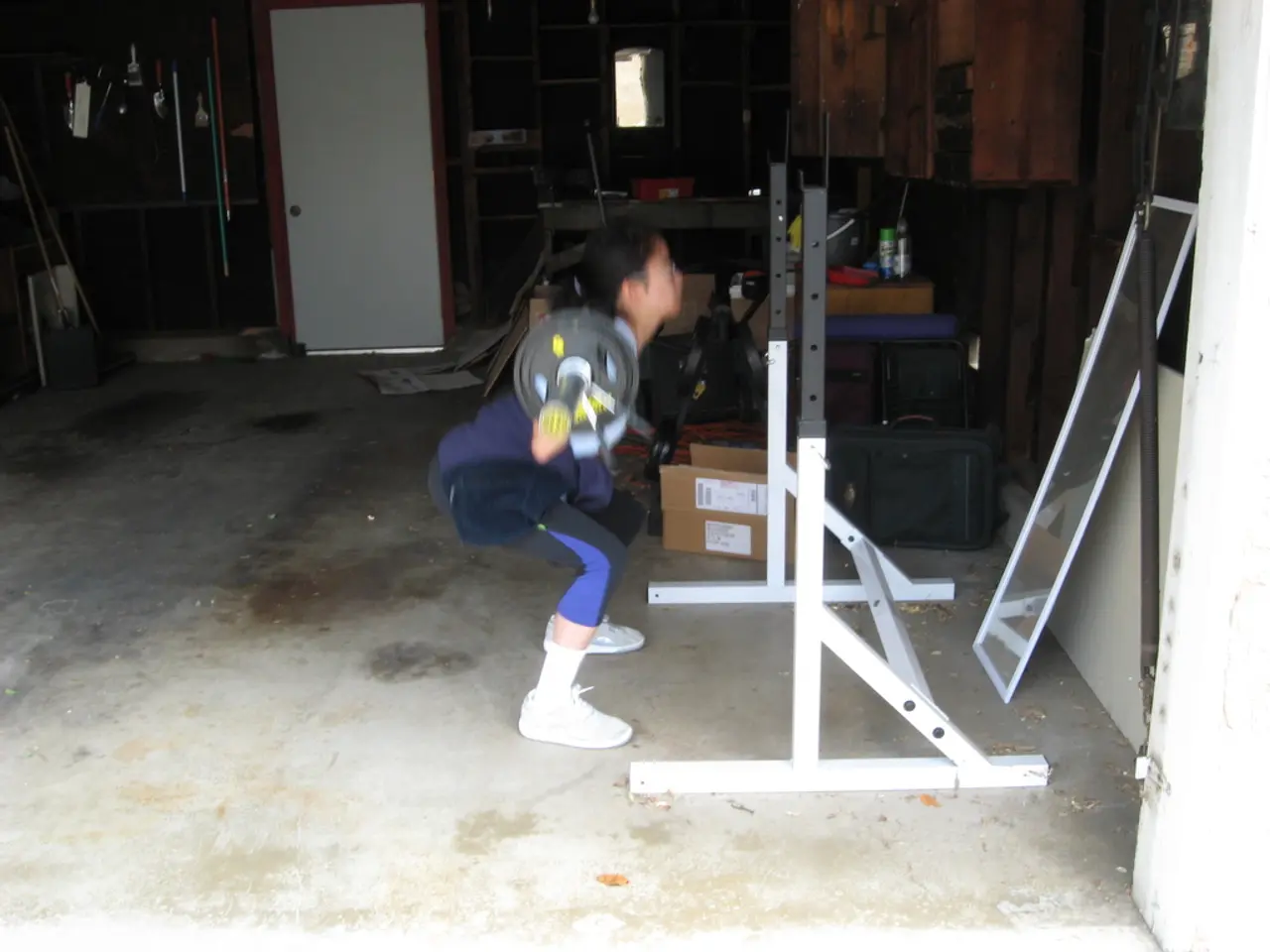Pull-up struggle no more? One exercise reportedly transformed my prowess
In everyday life, the chin-over-bar hold can lead to better posture, a stronger physique, and a self-esteem boost. This exercise is a crucial part of pull-up training, serving as a foundation for building upper-body strength and eventually achieving your first pull-up.
To perform a chin-over-bar hold correctly, follow these key elements:
- Grip: Adopt an underhand grip, with hands shoulder-width or slightly narrower apart for balance and maximum muscle activation.
- Body position: Pull yourself so your chin is above or at bar level. Keep shoulders slightly retracted to engage upper back muscles and protect the shoulder joints.
- Muscle engagement: Focus on activating the latissimus dorsi, biceps, and upper back. Keep the core tight to stabilize and avoid excessive swinging.
- Hold duration: Maintain an isometric hold at the top position to build grip strength, biceps endurance, and static upper body strength.
For beginners, start with static hangs if you can’t yet hold the chin-over-bar position. As strength improves, progress to chin holds, and eventually to full chin-ups and pull-ups. Beginners should aim for three reps of max second holds, with short durations at first, for three sets. More experienced individuals can set a time for holding the position and aim for three sets of three reps.
Strengthening the muscles during the chin-over-bar hold increases the likelihood of achieving the first pull-up rep. To get your first pull-up, follow a progressive strength program that includes back-strengthening exercises, core work, hanging work, and band-assisted pull-ups.
It is a misconception that arm strength is necessary for a pull-up; a strong core, upper back, and lat muscles are more important. Pull-ups recruit multiple muscle groups, improve pulling power, grip strength, and core stability.
Rest for 10 seconds between reps and up to a minute between sets for beginners. The chin-over-bar hold is an isometric hold, where the muscles in the back and core are under tension but stay the same length.
To initiate the chin-over-bar hold, jump into the top position of a pull-up, with your chin above the bar. To maintain the hold, engage the upper back and core muscles, and squeeze the shoulder blades together.
The chin-over-bar hold is a non-negotiable part of the program for achieving your first pull-up. With consistent practice and proper technique, you'll be on your way to mastering this essential exercise and unlocking the benefits of pull-ups.
Regular practice of chin-over-bar holds can contribute to a healthier lifestyle, promoting improved fitness-and-exercise and overall health-and-wellness. By focusing on the activation of the latissimus dorsi, biceps, and upper back, this exercise also helps to debunk the myth that arm strength is crucial for pull-ups, as a strong core and upper back are more essential.




